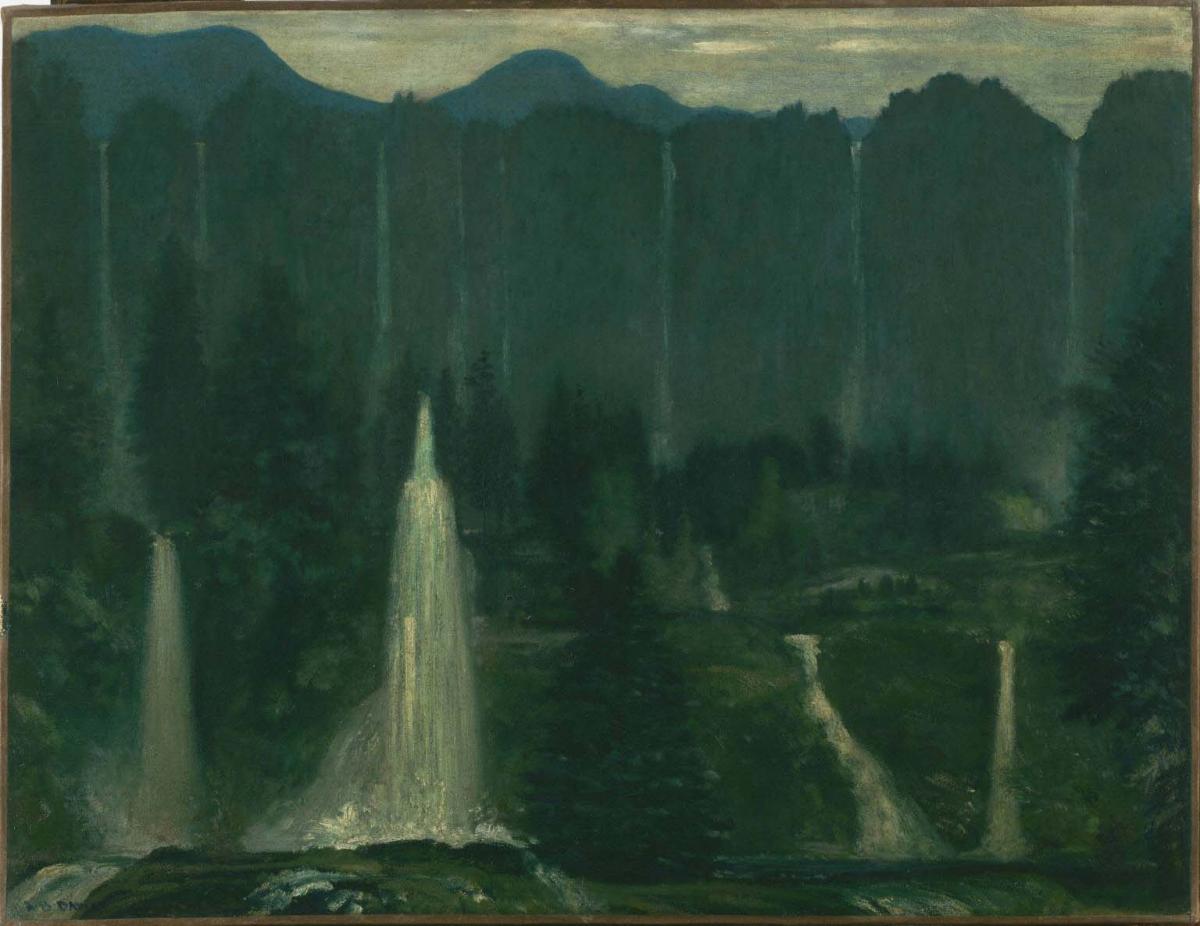Many Waters
Arthur B. Davies ( c. 1905 )

Many Waters was exhibited in the 1908 exhibition of The Eight; it depicts nature in terms of powerful forces and dramatic spectacle. Because of its poetic, primitive-sounding title and its view of a dozen waterfalls spilling down from a wall of cliffs and cascading into a verdant valley, the painting seems more like a fanciful product of the artist’s imagination than the record of an actual place. In letters to his dealer, William Macbeth, Davies wrote that he had seen enough natural wonders to “satisfy any ordinary man.” Many Waters is a view of the range of cliffs that, rising more than 3,000 feet, flanks the seven-mile stretch of Yosemite Valley and has a large concentration of free, leaping waterfalls. Davies visited the site in 1905 during a trip with Edna Potter across the Sierra Nevada to the Pacific Coast. Some of his finest landscapes resulted from his journey.
Davies looked to the work of artists who previously painted Yosemite, including Albert Bierstadt, Thomas Moran, and other Hudson River Valley School painters. Like his predecessors, he stood in awe before the primordial beauty of the American landscape and saw it as an Edenic paradise. However, Davies took a different approach when painting the landscape. Unlike Bierstadt and Moran, whose work was theatrical and full of descriptive detail, Davies painted Many Waters with broad brushstrokes, using blurred forms and subtle tonal modulations in a palette of soft blues. He flattened the pictorial space and created a composition showing all the falls—though not actually physically possible—resulting in the transformation of an already spectacular location into one of mystical dimension. As Duncan Phillips observed, “even when full of solitude, we are thrilled in such pictures as…Many Waters by a sense of awed expectancy, thoroughly in a mood to feel that anything might happen.”